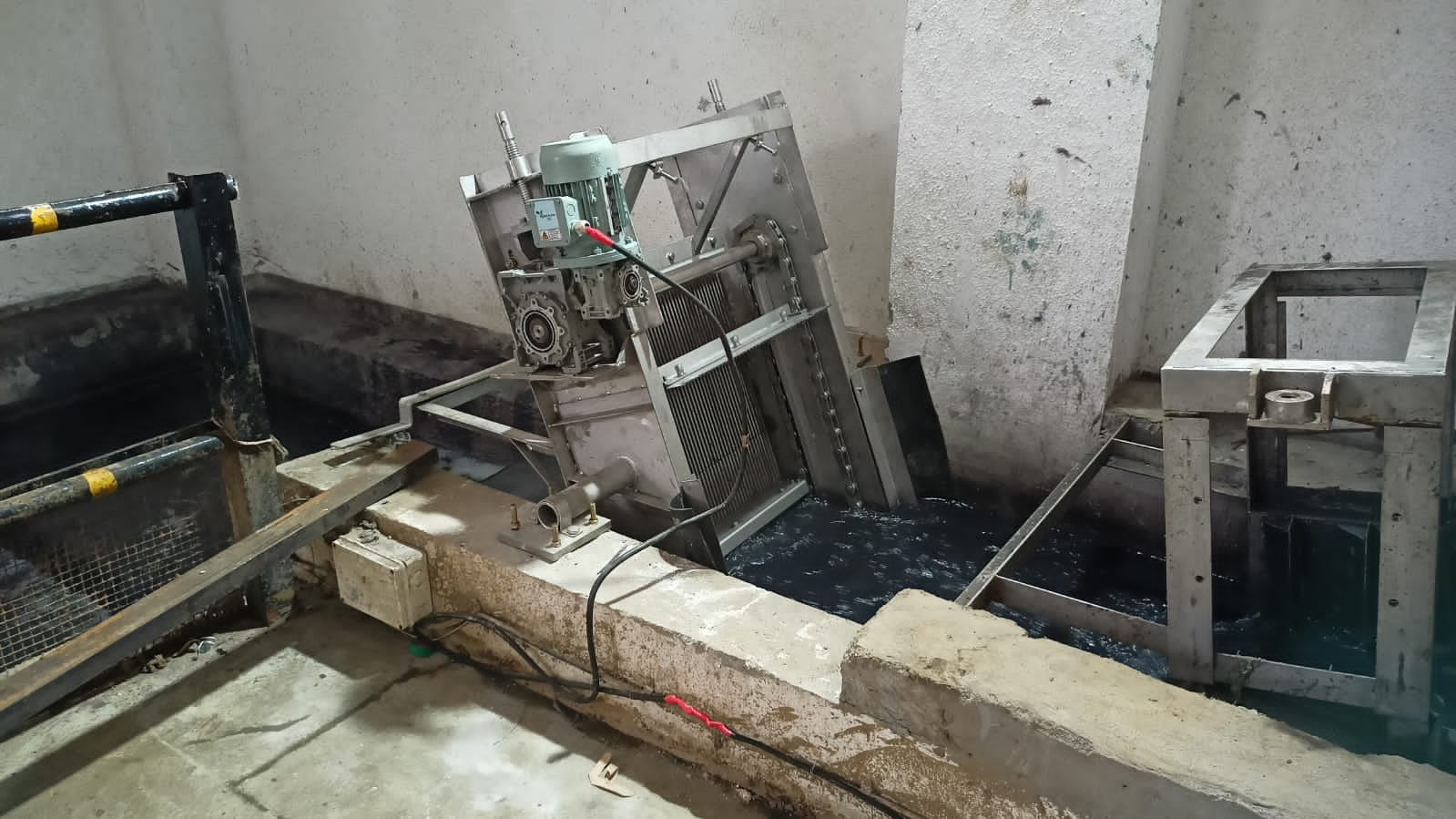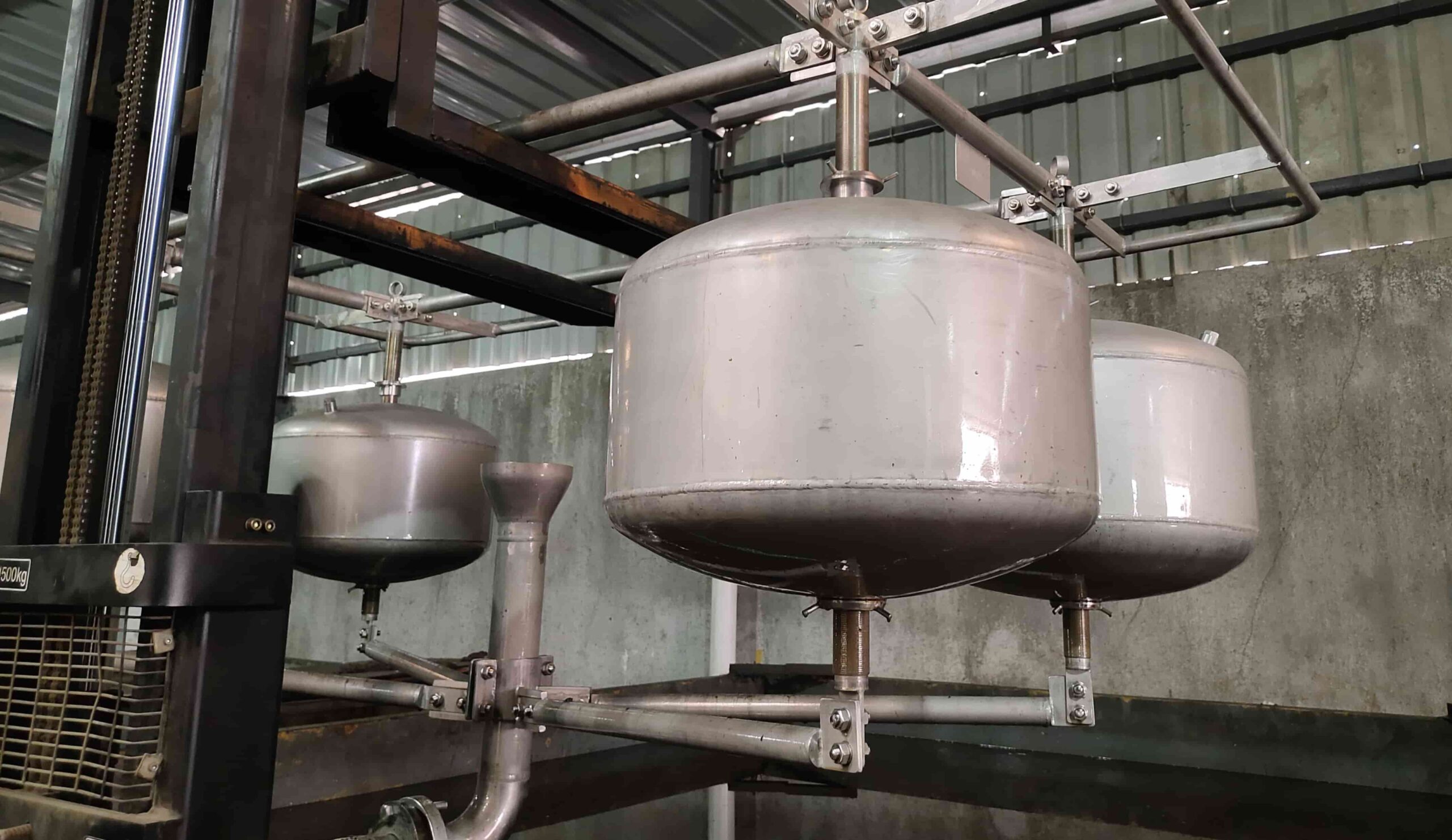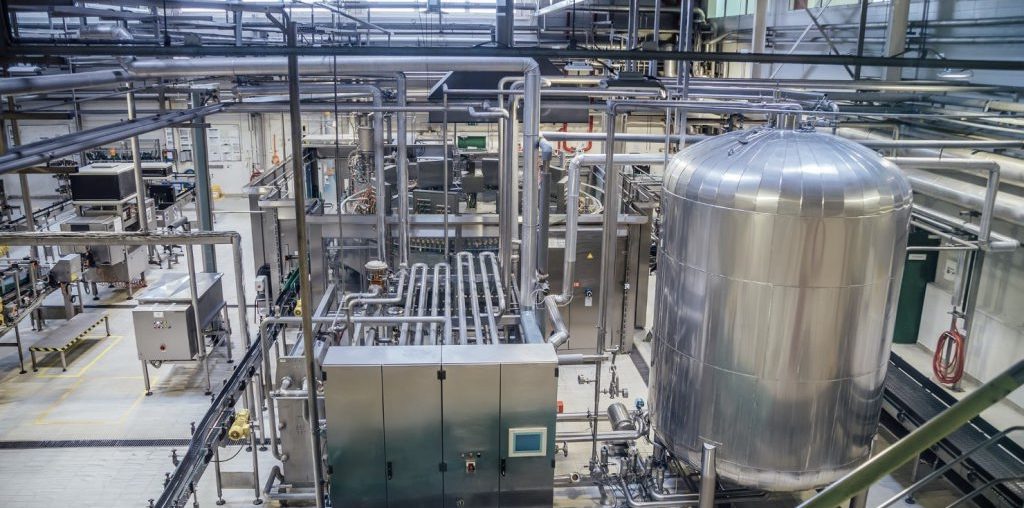Bar Screen for Preliminary Wastewater Treatment

Wastewater mainly contains large solids, pollutants, and grit. Wastewater treatment involves a set of processes that begins with screening.
Screening of large solids and floating debris is essential to mitigate mechanical wear of treatment equipment, and to improve overall process efficiency. Screening is one of the preliminary treatments.
Role of a Bar Screen
A Bar Screenplay plays a crucial role in the preliminary stage of wastewater treatment. Large solid debris is filtered using a bar screen. These coarse bar screens prevent wood, paper, metal, plastic, rags, and other large debris from entering treatment processes. A Bar Screen is also called a Racks Screen.
A bar screen ensures that pumps, valves, pipelines, impellers, and other downstream
equipment do not get clogged.
Working on a Bar Screen
The most common type of Bar Screen consists of inclined vertical bars. The inclined bars prevent flowing large debris, rags, plastic, etc., from entering the subsequent treatment process. The bar screen is either manually or mechanically operated. The manual bar screen has an opening size of 6 mm and above, a channel width of up to 3 m, and a channel depth of up to 5 m.
A Bar Screen that works on a conveyor system is a mechanical bar screen. The conveyor allows cleaning of the screen by picking up entangled solids. A single rake or multiple rakes wipe the bars clean. On cleaning, the flow of wastewater is unrestricted. Mechanical bar screens have many advantages in comparison to manual bar screens. At the same time, under certain conditions, a Manual Bar Screen is most suitable.
Manual & Mechanical Bar Screen
Manual Bar Screen
– Cleaning methodology is manual
– The cleaning process is labor-intensive & time-consuming
– Low efficiency in handling high flow rates
– Ideal for small wastewater treatment plants
– Ideal as a backup screening system
– Low maintenance requirement
– Robust & durable
Mechanical Bar Screen
– Mechanical cleaning is advantageous to maintain the flow rate
– Limited labor involvement
– Efficient in handling high-low rates
– Maintenance cost higher than Manual Bar Screen
– Higher CAPEX than Manual Bar Screen
– Ideal for both small & large treatment plants
Mechanically operated Bar Screen improves process productivity and efficiency while mitigating operational and maintenance concerns. The four types of Mechanical Bar Screens are:
Honeycomb Screen: The honeycomb screen uses a metallic honeycomb conveyor belt to arrest flowing debris. A combination of water jets and brush clean the screen. The honeycomb screen arrests the flowing debris of 20 mm and above.
Multi Rake Screen: Multi rake screen consists of uniformly spaced inclined bars and rakes. These bars arrest fine, medium, and large flowing debris. Multiple mechanized rakes clean the inclined bars. These rakes clean the screen in an upward direction. The collected waste is discharged in a bin or conveyor.
Rotary Brush Screen: The rotary brush screen is designed to remove fibers, hair, and other foreign objects. A rotary brush screen comprises a semicircle perforated bed and a rotating brush. The perforated bed arrests debris from the flowing wastewater stream, and the rotating brush lifts the debris, cleaning the screen’s surface. The debris is either collected in an in-built removable collection tank or an external drum.
Basket Screen: The basket screen is a coarse bar screen installed in pumping stations and manholes. The basket is placed in the path of the wastewater stream to arrest debris. The basket is lifted up to clean the debris and repositioned by lowering it using guided rails via an electric hoist. A drop screen is engineered to block the channel while the basket is out for cleaning. The Basket screen sections are 10 to 40 mm apart.
To conclude, the type of bar screen appropriate for your treatment plant depends on the size, flow rate, solid load, infrastructure, site conditions, and budget. Of the many available options, the correct type of bar screen for your wastewater treatment plant should safeguard downstream equipment and, at the same time, improve overall process efficiency.
Frequently Asked Question
Q.1 Are there any challenges or limitations associated with using screens in wastewater treatment?
A. Yes, challenges with screens in wastewater treatment include clogging, reduced efficiency, and potential limitations in capturing smaller particles. Proper selection, monitoring, and maintenance are crucial for optimal performance.
Q.2 How do penstock gates prevent water leakage?
A. Penstock gates prevent water leakage by forming a tight seal when closed, ensuring a secure barrier between the gate and its frame in dams or water systems. This watertight seal minimizes the risk of leaks, maintaining effective water flow control.
Q.3 What are the essential equipment needed for oil spill response in India?
A. Essential oil spill response equipment in India includes containment booms, skimmers, recovery vessels, PPE, dispersants, and response kits for prompt and effective cleanup.
The slotted pipe is a rotary tube with horizontal ‘C’ shaped openings. The tube/pipe is mounted on the top of the tank to collect floating oil, scum, debris, etc. in industrial applications.
The slotted pipe consists of a 60° slot with reinforced gaps. The pipe can be rotated on demand either manually or by motorized arrangement. The pipe is supported on one side to a closed flange and on the other side to an open flange. The scum, oil, debris collected in the pipe gets discharged from the open flange end.
An operator removes oil, scum, debris, etc by turning the horizontal opening downward until it meets the floating oils, scum layer. The floating oil, scum, and debris then flow through the horizontal opening into the pipe to the open flange end to the collection tank. The turning of the pipe can be manual or motorized.
Slotted pipes find applications across various industries, such as oil and gas, water and wastewater treatment, and groundwater exploration. Each one has unique requirements that a slotted pipe fulfils, hence it is important to understand slotted pipe for different applications.
• Oil & Gas Well: In the oil/gas wells the function of a slotted pipe is to control sand. The pipe acts as a filtrate to separate sand in the oil/gas wells. Different grades and types of slotted pipes are used for different strata during oil and gas exploration.
• Slotted pipes are ideal in oil and gas wells where screens cannot be installed. They are excellent sand control choices for thermal heavy oil and bitumen reservoirs. Suitable for high CO2/H2S, SAGD, CSS, and CBM and sand control for low fines and clay reservoirs.
• Water & Wastewater Treatment: Slotted pipes handle large volumes of floating scum consisting of oil, lubricants, fats, coolants, etc. They are ideal where oil is scattered and oil removal mechanism requires a large contact area. Slotted pipes efficiently skim low to medium-viscosity oil, including scum.
• Power Plants: Power generating plants use petroleum-based products ranging from fuel oil and hydraulic fluids to lubricating greases and oils, whether coal-fired, gas-fired, hydropower, or nuclear. These lubricants support all moving parts of the power plant, resulting in some oil leaks finding its way into the process, cooling, or cleaning water that flows throughout the plant. Slotted pipes are used for conditioning recirculating water and as part of wastewater treatment before discharge into the drainage system.
• Drainage Systems: Slotted pipes are used in drainage systems to remove water on streets, highways, and parking lots. They also find application in draining excess water in swimming pools.
Slotted pipes are gaining popularity in drainage systems. The features and advantages they offer are:
• Aesthetically pleasing and inexpensive
• Durable and easy to install
• Maximum flirtation and minimum clogging
Slotted pipes require low maintenance and are effective in removing floating oils, scum, and debris. Their use in industrial, public, and urban areas differs based on the applications they serve. To understand the type, material of construction, and specifications required for your application, consult an expert to make the right choice.
Frequently Asked Questions
Q.1 What are the main components of a mechanical bar screen?
A. The main components of a mechanical bar screen typically include a frame, bar racks, and a cleaning mechanism. These components work together to effectively remove debris and solids from wastewater, ensuring efficient operation of the screening process.
Q.2 How does a weir gate function in controlling water flow?
A. A weir gate functions by regulating water flow through a dam or canal. It controls the water level by raising or lowering a barrier, allowing for precise management of water flow rates and levels to meet operational needs.





